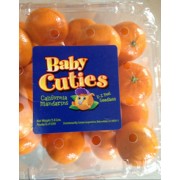
:max_bytes(150000):strip_icc()/Clementines-579188f65f9b58cdf33b8331.jpg)
Spanish scientists improved this technique, and in the 1980s and 1990s seedless Spanish clementines conquered markets in Europe and the eastern United States.Ĭalifornia growers saw this success, and in the late 1990s rushed to plant clementines, mostly in the San Joaquin Valley citrus belt, from south of Bakersfield to Fresno. A few seedless mandarins have been around for more than a century, notably the early-season satsumas, but they were limited in season and not as addictively sweet and richly flavored as the best varieties, like clementines.

To feed the demand for fruit with less mess, farmers and scientists have been chasing new varieties and developing new technologies.īut the process began long ago, when growers found natural mutations of citrus fruits with few or no seeds, like navel oranges and Persian limes, which they propagated by grafting. “That’s where your low prices are going to be.”Īs growers learned starting 70 years ago with seedless grapes and more than a decade ago with seedless watermelons, shoppers will pay for convenience. Tom Mulholland, who grows 400 acres of mandarins southeast of Fresno, was even more dismissive of seeded varieties. “It’s becoming impossible to market mandarins with a high level of seeds,” said Etienne Rabe, a manager for Sun Pacific, a large grower, as he watched harvesters clip fruit at a huge planting near Bakersfield. In 10 years it will probably be hard to find mandarins, also known as tangerines, with seeds. The acres in California planted with mandarins, mostly seedless varieties, have grown to 27,000 from 10,000 in 1998. If the response seems unusual it’s because of what is at stake: seedless mandarins fetch three to four times the price of seeded ones, according to a 2005 study.


 0 kommentar(er)
0 kommentar(er)
